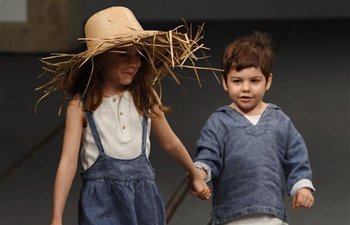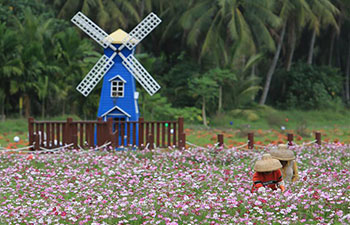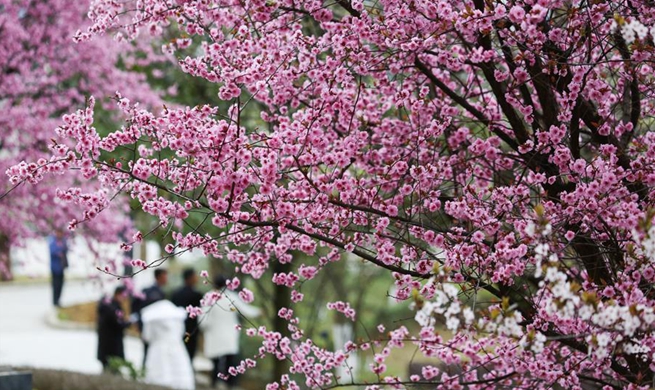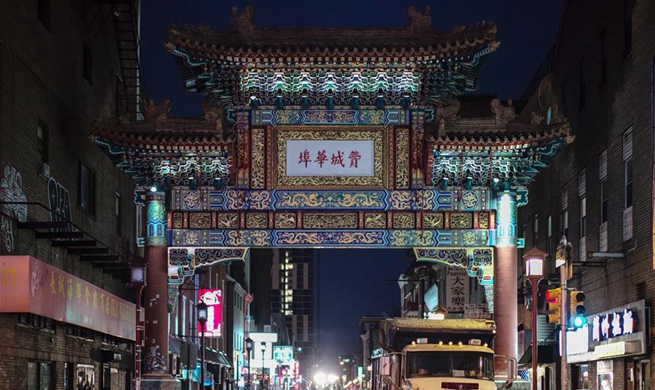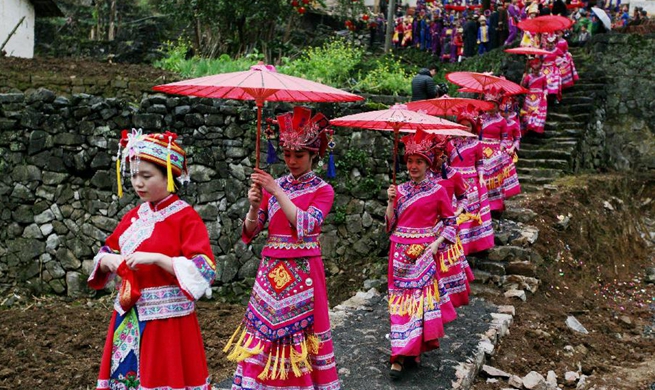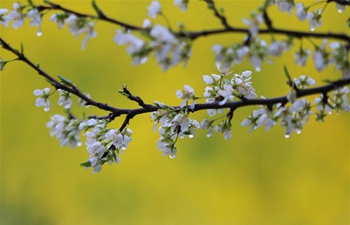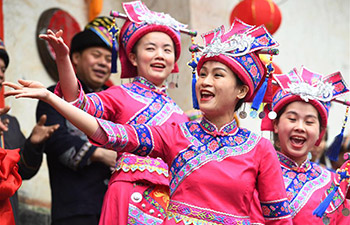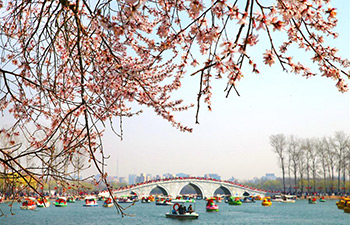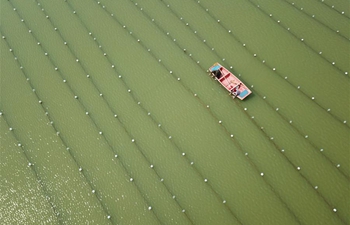by Ronald Ssekandi
BUKOMANSIMBI, Uganda, March 18 (Xinhua) -- Barkcloth is a cherished ancient fabric among the Bantu people in western, southern and central Uganda.
Among the Baganda people in central Uganda, the fabric was made for the royal family. It came in different shades of brown and was worn differently by the royals to show their status. Some members of the community also wore the fabric.
Barkcloth was worn at special functions like coronation of a king, social gatherings and also used for other cultural and spiritual purposes.
The fabric was a traded commodity within neighboring kingdoms and chiefdoms in present day Democratic Republic of Congo, Rwanda, Burundi and Tanzania.
HARVEST
Barkcloth is made from the inner bark of a tree species called Ficus natalensis, commonly known here as a Mutuba tree.
Processing barkcloth is a special craft and people who carry it out are from particular families among the Baganda people. It is a delicate and laborious exercise.
Sixty five-year-old Paul Bukenya Katamila has been harvesting barkcloth since he was five years old. He acquired the skill from his father who was a renowned barkcloth processor in south central Uganda. Bukenya's father also acquired the skill from his ancestors.
Harvesting starts with the removal of the outer bark of the Mutuba tree. The process is done by a group of about six men headed by their master, in this case Bukenya. The harvesting and processing is a preserve for men, according to tradition.
The craftsmen harvest from a tree that is two years and above in order to get good fabric.
After the outer layer is removed, Bukenya, with the help of assistants, takes the lead in removing the inner bark using tender banana tree stalks and a sharp knife. Depending on the size of the tree, the removal process can take about 15 minutes.
The bark is folded by one of the assistants and taken to the processing area, usually under a shed, where it is boiled for about two to three minutes to make it softer.
Back at the tree, Bukenya with the help of his assistants wraps the tree stem with yellowing banana leaves to protect it from getting damaged.
"After six days, we remove the leaves and let the bark grow again. After one year, the tree will be able to be harvested," Bukenya told Xinhua, adding that the bark can be harvested from a tree for over 40 years.
At the processing center, after the boiling, Bukenya and his assistants start hitting the bark with wooden mallets. The process is repeatedly done until they get the desired size and texture of barkcloth.
THREAT TO BARKCLOTH
The introduction of cotton cloth by Arab caravan traders in the nineteenth century, threatened the use of bark cloth. Locals resorted to using cotton cloth limiting the barkcloth to cultural and spiritual uses. It was mainly used for burial purposes.
In 2005, the United Nations Educational, Scientific and Cultural Organization (UNESCO) declared barkcloth a "Masterpiece of Oral and Intangible Cultural Heritage". In 2008 barkcloth was added to the UNESCO World Heritage list.
According to UNESCO, the process of making barkcloth existed before weaving was invented, making it one of the oldest textiles in history.
These declarations gave a new impetus to the movement aimed at reviving the barkcloth industry.
Fred Kato Mutebi, a professional artist, is one of the people championing the revival of the barkcloth industry.
Mutebi started a community-based association in his home area to promote the planting of Mutuba tree and use of the barkcloth.
The association dubbed Bukomansimbi Organic Tree Farmers Association (BOTFA) has over 900 members. The members regularly meet to plan ways of conserving the Mutuba tree and also promote the benefits of the tree to the local community.
The association also has a nursery bed for the Mutuba seedlings from which farmers from different parts of the country come and buy.
"The hope is that we are going to have an unconventional canopy in Uganda and in the region and therefore we would have tackled the environmental issue and give jobs to people," Mutebi said.
"There was a time when it (Mutuba) had spread in the entire region, as far as Rwanda, South Sudan, Tanzania. We want to follow up the pattern."
NEW USES
In the capital Kampala, the perception about barkcloth is changing. The ancient fabric has found new uses.
Mutebi said he has resorted to using barkcloth as canvas instead of the conventional paper imported into the country.
His intention is to inspire African artists to start using African materials from renewable sources, with the prerequisite of good conservation of natural resources.
Mutebi hopes this can eventually spark a global movement of artists using barkcloth.
"There is always a moment in one's life to think about where they have to come from, where they are and what their contribution should be to shape the future," Mutebi said.
"Am trying as much as possible to deal with the different ways and possible methods of manipulating barkcloth so that we inspire a wave of young artists." he said.
Indeed Mutebi has inspired some artists in Uganda. Edward Waddimba, a sculptor was inspired by Mutebi to move away from using tree stumps to using barkcloth for sculpture.
Waddimba told Xinhua in a recent interview that he hopes other sculptors would be inspired to use barkcloth instead of promoting the cutting of trees for sculpture.
At several tourist gift shops in Kampala, barkcloth is a major highlight. Craftsmen make bags, bangles, rugs and other gifts out of barkcloth.
Barkcloth has also hit the international fashion industry. Mutebi said BOTFA supplies barkcloth to some of the designers in the fashion industry even as far as Europe.
Uganda media quotes a lot a Ugandan-born British designer Jose Hendo, whose collection has earned her recognition on the international stage given its unique touch of entire design work from barkcloth material.
In Bukomansimbi, Mutebi together with his community members have started a training school that will give practical lessons on how to process barkcloth. Every weekend students from the neighboring communities come to the school.
Mutebi said the school will help train other barkcloth processors to replenish the dwindling numbers. He said there are currently 70 barkcloth craftsmen and most of them are elderly.
The training school also has an accommodation section where tourists can stay as they are taken through the process of making barkcloth.

